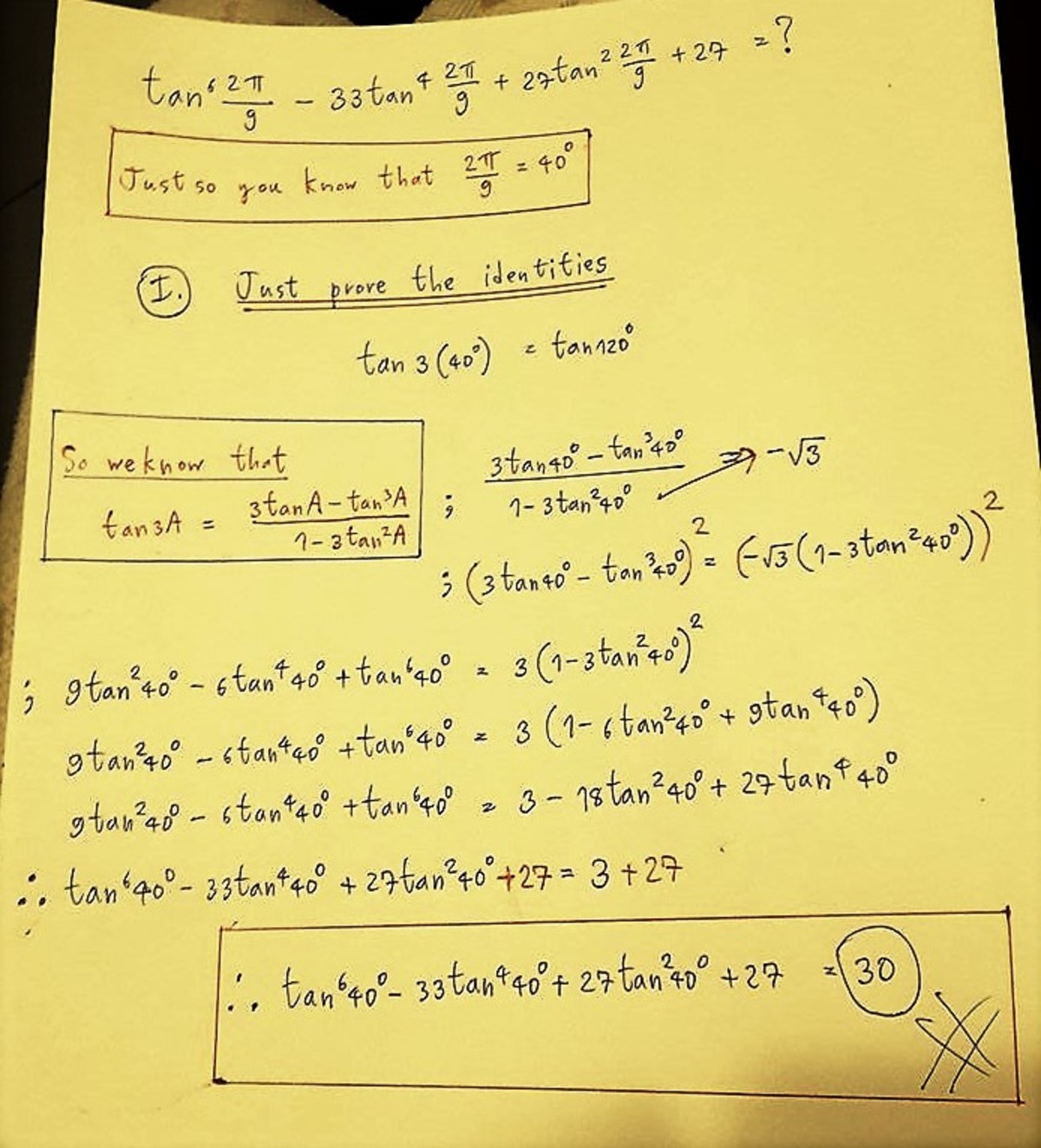So Many Rads
tan 6 9 2 π − 3 3 tan 4 9 2 π + 2 7 tan 2 9 2 π + 2 7 = ?
The answer is 30.
This section requires Javascript.
You are seeing this because something didn't load right. We suggest you, (a) try
refreshing the page, (b) enabling javascript if it is disabled on your browser and,
finally, (c)
loading the
non-javascript version of this page
. We're sorry about the hassle.
2 solutions
+1 Your solution is a great read:
- Instead of "Just prove the identities", what you mean is "Just use the identities".
- This "just happens" to work out. What other approaches could we use?
Thanks for contributing and helping other members aspire to be like you!
Yup, this is essentially correct. But it would be much easier to read through your steps if you elaborated a little more on a few points. For example,
[1] It's better to explictly mention that tan ( 2 π / 9 ) is not a well known number, but tan ( 3 × 2 π / 9 ) = − 3 is a simple constant. And because you only know the value of tan ( 3 A ) , but not tan A , this motivates you to use the triple angle identity , tan ( 3 X ) = 1 − 3 tan 2 ( X ) 3 tan ( X ) − tan 3 ( X ) .
[2] There isn't a need to convert 2 π / 9 radian into 40 degrees, as it not needed in the first place. It is however, useful to state that you converted the angles to degrees from the start because you felt more comfortable to work with degrees, as opposed to radians.

Let A = 9 2 π , then tan ( 9 A ) = 0 . Using the generalized compound tangent formula :
0 = tan ( 9 A ) = 1 − ( 2 9 ) ( tan A ) 2 + ( 4 9 ) ( tan A ) 4 − ( 6 9 ) ( tan A ) 6 + ( 8 9 ) ( tan A ) 8 ( 1 9 ) ( tan A ) − ( 3 9 ) ( tan A ) 3 + ( 5 9 ) ( tan A ) 5 − ( 7 9 ) ( tan A ) 7 + ( 9 9 ) ( tan A ) 9 .
So the numerator of the fraction above must be equal to 0. Dividing that expression by tan A = 0 , gives
9 − 8 4 ( tan A ) 2 + 1 2 6 ( tan A ) 4 − 3 6 ( tan A ) 6 + ( tan A ) 8 = 0 ⇔ ( tan 2 A − 3 ) ( ( tan A ) 6 − 3 3 ( tan A ) 4 + 2 7 ( tan A ) 2 − 3 ) = 0 .
Since tan 2 A − 3 = 0 , we cancel divide the equation by tan 2 A − 3 . The result follows.